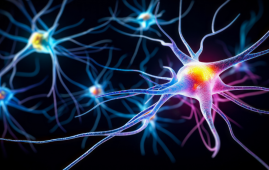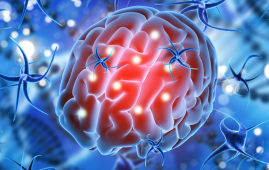

A recent Nutrients publication reviewed the current understanding of potential effects of Vitamin D on aging and age-related diseases.
In summary, there is limited evidence suggesting that vitamin D possesses diverse properties that could affect the aging process. However, additional research is required to draw definitive clinical conclusions and develop treatments.
The Aging Process: Aging involves gradual declines in organ function, increasing the risk of age-related illnesses and mortality. Specific pathways, known as ‘hallmarks,’ are closely associated with these age-related changes.
In mammals, these hallmarks include dysbiosis, chronic inflammation, altered intercellular communication, stem cell depletion, cellular senescence, mitochondrial dysfunction, deregulated nutrient sensing, impaired macroautophagy, loss of proteostasis, epigenetic modifications, telomere shortening, and genomic instability.
These hallmarks interact in complex ways, contributing to cellular and molecular damage through integrated, primary, or antagonistic mechanisms.
While this damage has detrimental effects overall, understanding the relationships between these hallmarks could lead to interventions that modulate these mechanisms, thereby preventing or mitigating age-related diseases.
The Role of Vitamin D:
This vitamin is a crucial fat-soluble hormone synthesized from 7-dehydrocholesterol under ultraviolet irradiation. It follows a metabolic pathway similar to cholesterol, starting with acetyl coenzyme A in the cytosol.
After liver processing, it converts into calcitriol, the active form. Calcitriol regulates calcium and phosphorus homeostasis by binding to the vitamin D receptor (VDR). Beyond bone health, vitamin D possesses immunomodulatory properties and influences mitochondrial bioenergetics.
Variations in the VDR gene may impact vitamin D function, potentially affecting various physiological processes. Although research on effects of this vitamin on aging is limited, its genomic actions via VDRs and cytoplasmic membrane receptors suggest diverse cellular effects.
Vitamin D and Aging Hallmarks:
This vitamin demonstrates potential in modulating DNA integrity and stability, particularly in conditions like type 2 diabetes mellitus (T2DM) and cancer. Studies suggest that Vitamin D’s supplementation may reduce DNA damage and oxidative parameters, potentially offering protective effects against genomic instability and oncogene-induced senescence.
Epigenetic alterations linked to diseases and aging correlate with DNA methylation (DNAm). Vitamin D may modulate epigenetic aging by reducing methylation levels.
In pregnant women, supplementation of this vitamin is associated with lower retinoid-X-receptor-alpha (RXRA) methylation, impacting offspring bone mass and infant developmental processes.
Cellular senescence, a hallmark of aging, involves reduced proliferative capacity and a pro-inflammatory secretory phenotype (SASP). Vitamin D supplementation shows promise in reducing senescence and inflammation.
Trials with nutraceutical supplements and alphacalcidol demonstrate improved immune profiles in older adults, underscoring vitamin D’s immunomodulatory role in aging and chronic inflammation.
Vitamin D regulates protein homeostasis, impacting longevity and muscle health. In C. elegans, this vitamin reduces protein insolubility and toxicity, promoting longevity. In rats, deficiency of this vitamin increases muscle protein breakdown and contributes to muscle atrophy.
Vitamin D also influences cellular signaling involved in myogenesis and activates adenosine monophosphate-activated protein kinase (AMPK) during metabolic stress. This vitamin affects cellular and mitochondrial function across various systems. It reduces oxidative stress, improves muscle and lung function, and attenuates oxidative damage in neurodegenerative and cardiovascular diseases.
Vitamin D also demonstrates potential in mitigating mitochondrial dysfunction in conditions like sarcopenia and Crohn’s disease. Additionally, this vitamin plays a crucial role in regulating immune responses due to its widespread distribution among immune cells and autonomic control of active concentration of this vitamin at inflamed sites. While some studies link supplementation of this vitamin to reduced inflammation markers in various conditions, overall evidence is inconclusive despite potential benefits in certain diseases.
Chronic inflammation can disrupt gut microbiota balance, as seen in conditions like human immunodeficiency virus (HIV) infection and osteoarthritis (OA). Vitamin D supplementation shows promise in restoring microbial balance and reducing inflammation.
Studies indicate role of this vitamin in enhancing antimicrobial peptides, stabilizing gut barriers, and regulating microbiota composition.
Vitamin D’s potential in bone regeneration and neural stem cell modulation are crucial for nervous system development and repair. It influences signaling in brain neurogenesis and may have therapeutic implications in conditions like acute myeloid leukemia. However, further research is needed to explore its full potential in stem cell therapy.
Research on vitamin D’s role in intercellular communication, particularly in bone cells, is limited. Studies suggest that this vitamin might affect gene expression in osteoclast formation and influence receptor expression in osteoblast-like cells. Further research is needed to explore its impact fully.
Vitamin D shows varied associations with telomere length in different populations. While some studies suggest a positive correlation between the levels of this vitamin and telomere length, Mendelian randomization studies do not support a causal relationship. However, vitamin D supplementation may enhance telomerase activity, potentially benefiting telomere wellness.
Conclusions: Understanding aging involves complex interactions among various biological mechanisms. Vitamin D shows promise in influencing the hallmarks of aging, including genomic stability and senescence.
However, further research is needed to fully comprehend its impact and potential clinical applications in promoting healthy aging.
For more information: Targeting the hallmarks of aging with vitamin D: starting to decode the myth, Nutrients, https://doi.org/10.3390/nu16060906
more recommended stories
 Brain Pulsations Linked to High BMI
Brain Pulsations Linked to High BMIAccording to a new study from.
 Brain Age Estimation: EEG Advancements in Neurology
Brain Age Estimation: EEG Advancements in NeurologyTo estimate brain age using EEG.
 Unlocking Ketogenic Diet for Epilepsy Management
Unlocking Ketogenic Diet for Epilepsy ManagementExploring the Therapeutic Potential of Ketogenic.
 Senescence in Neurons: Findings
Senescence in Neurons: FindingsBased on a new study by.
 Balanced Diet Linked to Enhanced Brain Health
Balanced Diet Linked to Enhanced Brain HealthDiet and brain health are strongly.
 Acid-Reducing Drugs Linked to Higher Migraine Risk
Acid-Reducing Drugs Linked to Higher Migraine RiskIndividuals who utilize acid-reducing drugs may.
 Atrial Fibrillation in Young Adults: Increased Heart Failure and Stroke Risk
Atrial Fibrillation in Young Adults: Increased Heart Failure and Stroke RiskIn a recent study published in.
 Neurodegeneration Linked to Fibrin in Brain Injury
Neurodegeneration Linked to Fibrin in Brain InjuryThe health results for the approximately.
 DELiVR: Advancing Brain Cell Mapping with AI and VR
DELiVR: Advancing Brain Cell Mapping with AI and VRDELiVR is a novel AI-based method.
 Retinal Neurodegeneration in Parkinson’s Disease
Retinal Neurodegeneration in Parkinson’s DiseaseBy measuring the thickness of the.

Leave a Comment